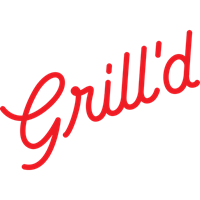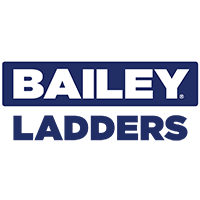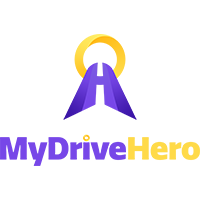
More Australians than ever this year have been working from home at least part of the time. Whether COVID lockdowns have contributed to more time working from home, or whether your usual job is normally done from home, it is common to struggle to settle into a routine like you would when working from the office.
Article written by Fuel Your Life.
Our Dietitians at Fuel Your Life work with many clients each week around optimising their nutrition to fuel peak performance when working from home. Here are some common struggles our clients have said, along with key strategies to ensure you are surviving and thriving in the work from home environment.
1. Do you need to eat breakfast? In short, no. But it also depends on many factor some of which we explain below. We recommend that you eat breakfast if:
1. Your job requires a lot of concentration or is highly demanding (physically or mentally) because our brain requires fuel just like any other organ of the body.
o Include lower GI carbohydrates such as oats, high fibre cereal, wholegrain toast, reduced fat yoghurt/milk and most fruits for sustained energy and mental focus across the day as these foods will digest down to glucose (the brain’s preferred fuel source) over several hours of the morning.
2. You exercise first thing in the morning. Physical activity provides a range of different benefits to our overall health as well as our work performance (better concentration, sharper memory, enhanced creativity etc).
o Consuming a breakfast containing protein and carbohydrates will ensure you are meeting recovery needs after exercise. Perfect options include eggs on wholegrain toast or Greek yoghurt with fruit and muesli.
3. You struggle with overeating later in the day. A lot of individuals who skip breakfast also make up for it by eating excessive amounts of food later in the day.
o Incorporating some protein and high fibre carbohydrates at breakfast time will help to keep hunger levels at bay and blood sugar levels on an even keel. Suitable choices include porridge or overnight oats with Greek yoghurt, a vegetable omelette with a slice of rye bread or baked beans on soy linseed toast.
2. How do I prevent overeating?
There are many strategies we would utilise with clients to help prevent overeating. We have found that many people now working from home struggle to avoid the fridge and cupboard when they are bored or restless at home – the access to food is ad libitum.
1. Consider the food environment at home.
a. We tend to eat more of what is readily available and more easily assessable so keep the pantry and fridge stocked with fruit, vegetables, wholegrains, reduced fat dairy products and lean meat/alternatives and limit your access to ultra-processed foods such as chocolate, sweet biscuits and chips.
2. As the saying goes, ‘out of sight, out of mind’.
If possible, work from an office or room as far away from the kitchen as possible and keep food out of your workspace. Instead of eating at your desk, enjoy meals and snacks from a. the dining room or a table outdoors if you have a patio/balcony. This makes it easier to stick to set mealtimes and avoid the continued snacking across the day.
2. Have alternative behaviours up your sleeve.
a.It is also very common to use food to procrastinate from work. If this is the case, what else could you do to make work more enjoyable? Would listening to an upbeat playlist or taking a short walk around the block be a better way to manage boredom without the food? Have a think about other activities you can do in the same amount of time as the extra snacking that makes work more enjoyable or engaging.
1. I don’t have time to eat when I am at home!
Even though we have time, we also feel like we don’t, as our usual structure has gone out the window. So, the following strategies should help you get back on track.
1. Schedule in breaks for meals into your diary like you would for any other appointment.
o You may need to work around scheduled Zoom meetings or other work commitments for the day but make it as much of a priority as you can to ensure you are taking the time to fuel yourself appropriately, which will ultimately make you more efficient with work tasks across the day.
2. Have a meal ready to go.
o Cooking extra the night before for leftovers at lunch is a useful strategy, or making sure you have ingredients on hand for a lunch requiring minimal prep time. Something like a wholegrain wrap filled with BBQ chicken from the supermarket and packet salad takes less time than waiting for an Uber Eats order.
3. Set an alarm on your computer or phone if you need to remind yourself to take a break.
These not only help with ‘finding time to eat”, but also is one of the biggest ways to help reduce that overeating at home. By creating a structure, just like you had when in the office. Define the times you will be on break; define the foods you are going to eat and have them ready to go for those times. We have found many people who still “prepare their lunch” as if they were going to work have reduced their instances of overeating. Structure matters.
4. I just have no energy left in the afternoon. Did someone say nap?
3:30its is REAL for so many people, and with that comfy bed being only a few steps away we can’t blame you for thinking about a cheeky nap. But, try this first – this is our four step process to avoid 3:30itis.
That slump in energy levels mid-afternoon is normal and partially due to our circadian rhythm (body clock), which determines that our bodies feel most sleepy during the night as well as between 2-3pm. Other factors contributing to a dip in energy levels and concentration in the afternoon include hydration, screen time and nutrition factors.
1. Keep that water bottle on your desk and remember to take sips across the day.
a. Even mild dehydration will impair concentration and make it that much harder to get through the afternoon’s tasks at hand.
2. Schedule regular meals across the day and avoid lunches high in kilojoules or large amounts of high GI carbohydrates (e.g. Jasmine rice, white bread etc).
a. Whilst these foods will give you a quick release of energy, they also cause blood sugar levels to fall, and concentration along with it, within an hour or so after consumption. Instead, include lower GI carbohydrates in your lunch meal for more sustained energy and fuel for your brain. Good choices include multigrain bread/wraps/rolls or crackers, quinoa, sweet potato or fruit.
1. Use caffeine strategically.
a. Most people have a coffee first thing in the morning but incorporating that coffee (or other caffeinated beverage e.g. sugar-free energy drink) with lunch instead can help you get through the second half of the work day. Remember not to go overboard though! You still need to get to sleep at night!
2. Make time for a quick nutritious snack in the middle of the afternoon.
a. Something with carbohydrates as fuel for our brain and a little protein or healthy fat to help keep you full enough for a few hours until dinner time rolls around would be the ideal choice. Greek yoghurt and fruit, some cheese and wholegrain crackers or a small handful of dried fruit and nuts all work well.
We are due to release our new Nutrition to Fuel Your Work Performance online nutrition program, to join our active Nutrition to Fuel Your Mental Health and Nutrition to Fuel Your Life programs. Email us here (learn@fuelyourlife.com.au) to be notified when we do!
Fuel Your Life is an award-winning nationwide company and Official Dietitians and Performance Partners of the Melbourne Storm. Fuel Your Life dietitians are available to clients in all areas of the country. For more tips, be sure to check out our Instagram page @fuelyourlifeaus, or to find your closest dietitian, get in touch with our team today via our website www.fuelyourlife.com.au.






















